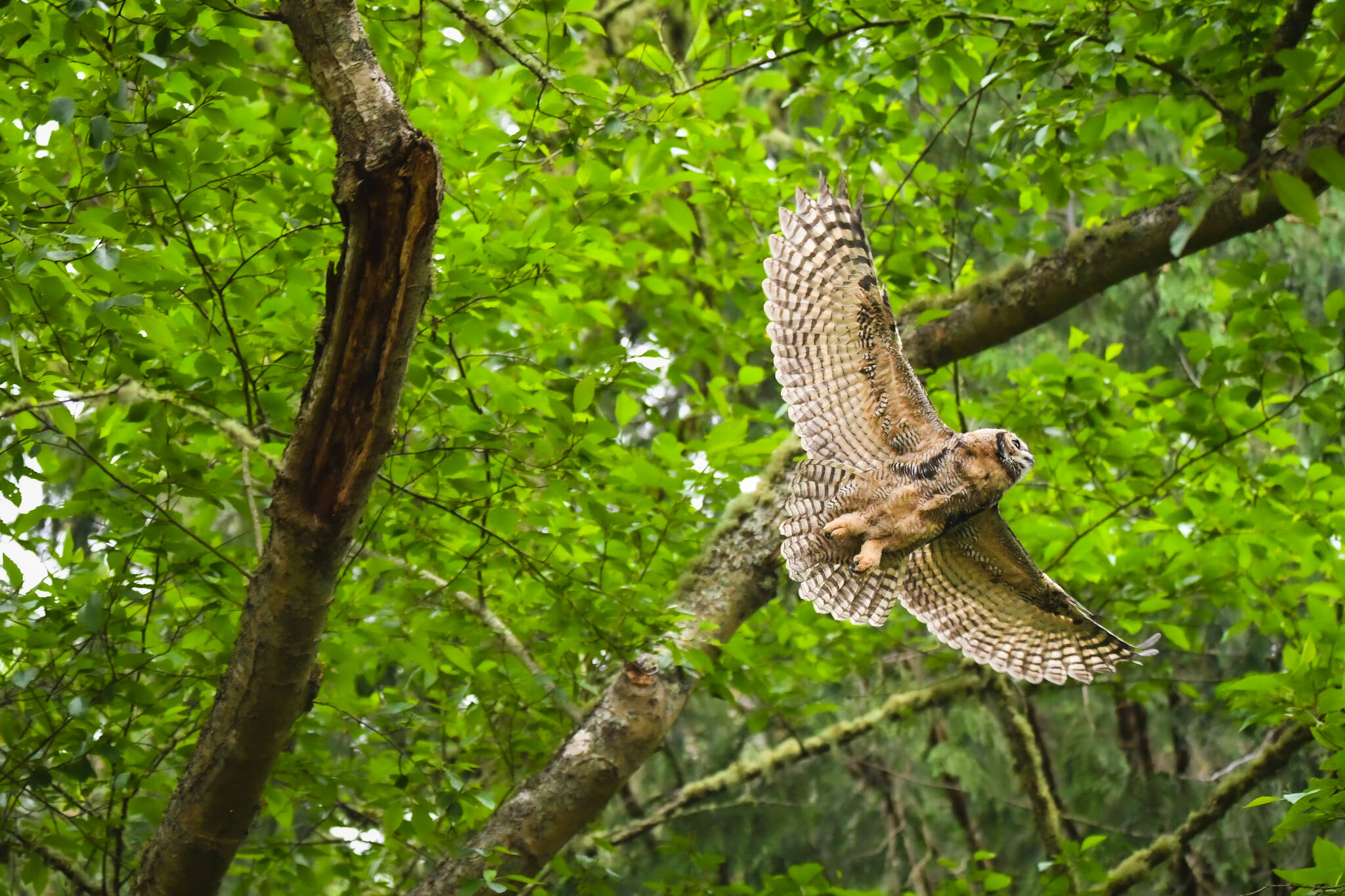As the days grow darker, the haunting calls through Whidbey’s woods grow louder.
Great horned owls, like other big owls, mate for life. They unite this time of year and remain through breeding season and then they separate. As Halloween comes nearer, the owls will re-establish their territory, claiming their throne among birds of the night.
On Oct. 15, master birder Constance Sidles of Birds Connect Seattle, Conservation Committee, University of Washington, and Constancy Press will give a presentation at the Freeland Library on Washington’s most mysterious birds. Registration fills quickly at sno-isle.bibliocommons.com, but interested participants can join the waitlist.
“I think anybody who’s ever seen an owl, it’s kind of a memorable experience,” Sidles said. “It’s eerie because most of them hunt at night, and night is a mysterious time to us humans. A lot of us are kind of afraid of the night. That’s sort of been bred into us over the course of our evolution.”
Owls cannot move their eyes. Instead, they move their entire head and stare with wide, seldom-blinking eyes. Eyes of a barn owl are cold and black.
“You see these two black holes staring at you and not looking away,” she said. “I can tell you that is very strange.”
This may be why many cultures associate owls with wisdom, she said. If somebody’s staring, they likely know something.
Many stories across cultures depict owls as bad omens, but this has never sat right to Cara Hefflinger, a wildlife photographer in Clinton.
“There’s a bad reputation for being bad luck or a harbinger of death or something like that, and I’ve never found that to be the case,” she said. “They’re so elusive. They’re dead silent when they fly. They’re beautiful creatures, and when you’re able to see them, I just think that brings people luck, if anything.”
Hefflinger is a fifth-generation Whidbey Islander, and at least that many generations of barn owls have lived in her family’s barn in the century they have owned it. As she grew up, her family rehabilitated injured owls, and her love of photography blossomed by taking photos of the owls near her home.
“Our family’s always had really strong connection with owls, and they passed that torch on to me,” she said.
Her grandfather had a knack for finding owls, like a party trick, she said. He would just walk into the woods and know where they were.
Hefflinger’s not so bad herself. She can often tell when an owl is near by the sound other birds make. Robins and crows, for example, sound like a siren.
A total of 15 owl species are residents of or migrate through Washington, more than any other state in the union. On Whidbey, Sidles said, there are likely around seven.
Some owl species are sporadic, she said, so it’s hard to tell if they’ve been seen on the island. Snowy owls, for example, live in the Arctic year-round, but when the lemming population they prey on drops, the adult snowy owls drive out the younger ones.
“They’re very stony about that,” she said. “It’s not like you let your kid live in your basement with you until they’re 30. They drive them away.”
This brings snowy owls south, she said, sometimes to Whidbey. Here, she’s seen them around Crockett Lake.
Most owls have fringed feathers that break up air currents as they fly, so they do so in complete silence. Even rodents, which hear much better than people, cannot hear them coming. Despite owls’ excellent night vision, they hunt mostly by listening. Owl ears are offset, so soundwaves hit them at different times, which helps them locate prey in the black of night.
Owl toes are like chickens’, Sidles said: three toes forward, one toe back. Yet, when they pounce to catch prey, a front toe becomes a back toe, forming extremely strong, sharp talons.
Hefflinger has seen these talons first-hand. Once, she heard there was a gray owl in a tree in Bellingham, and she went up to see it. She found it right away.
Gray owls are the biggest in the world, and the magnitude is impressive in person, she said. As people gathered around, the owl launched from the tree, right over her head, and landed just feet from her.
Hefflinger was shocked, but she didn’t take it as a sign of death. The owl was comfortable, she said.



